Walk a few minutes east from Saint-Michel metro and you’ll find yourself in one of Montreal’s most recent ethnic neighbourhoods: the Petit Maghreb, a 15-block strip of North African businesses along Jean Talon Street between St. Michel and Pie IX boulevards.
Nearly half of Montreal’s 63,000 immigrants from Morocco, Algeria and Tunisia arrived here after 2001. They’re quickly making their presence felt. Last spring, a group of Jean Talon St. business owners announced their intention to create a “Petit Maghreb” business district along the lines of Little Italy and Chinatown.
It seems that this would be the first such neighbourhood in North America, which probably isn’t surprising if you consider that Montreal is the only city on the continent with a significant maghrebin population. (In Toronto, for instance, there are just 665 immigrants from Algeria, compared to 26,825 in Montreal.) Its promoters insist that it will be a “positive affirmation of multiculturalism.”
Curious to check out Montreal’s little bit of North Africa for myself, I took the metro to Saint-Michel in November and wandered down Jean Talon. The comparisons to Little Italy or Chinatown are a bit premature: Little Maghreb is still in its infancy. There are plenty of cafés, bakeries, grocery stores, restaurants, mosques and community centres, but the street is low-slung and a bit sleepy, and not quite as intensely commercial as you’d expect.
I did notice a lot of terraces, though, so it’s probably a lot more happening in the summer. It will be interesting to watch Little Maghreb’s evolution as its merchants attempt to transform it into a city-wide destination.
Click here to see more photos.

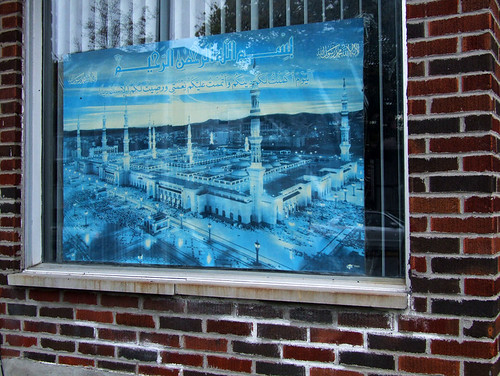
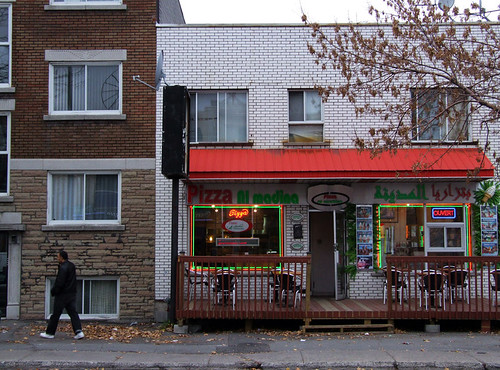
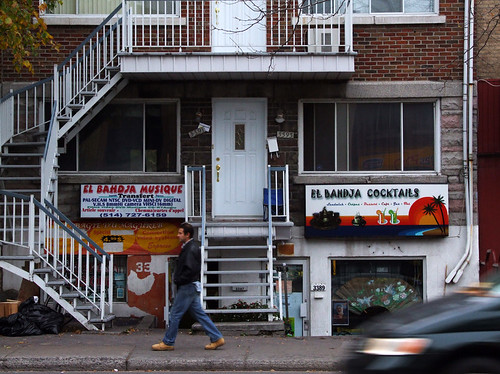
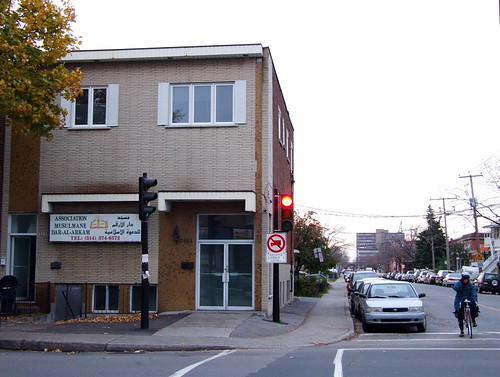
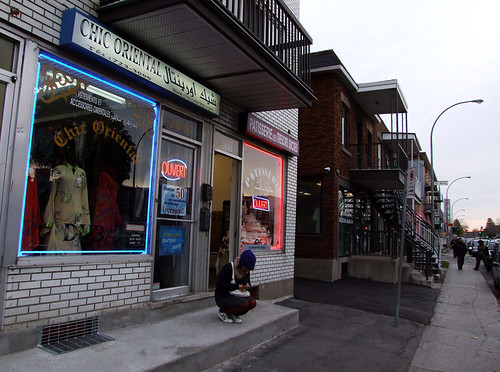
2 comments
I grew up on Jean-Talon street, mostly in between St-Michel and Pie-IX.
Business owners used to be Italian and Haitian. This Meghrab thing is really new to me. I left in 2000, right before it happened.
It is not lively and commercial because it does not cater to tourists like Chinatown or Little Italy. But it has its own twisted charm. It is not trendy or appealing. It’s bleak and monotonous but familiar. We never had much of a community life growing up cuz we were all from different ethnic communities. I wonder how the other communities that have been living there for a long time deal with the arabic population.
That music store, used to be a Haitian music store. Those restaurant/coffee shops used to be bakeries. I used to live upstairs from an Italian restaurant that didn’t serve food (it was a front).
I like the direction they are taking this thing into. But I better go see what’s up now before it becomes a tourist trap.
That’s good,
but (as usual there is always a but), what is typical to the maghreb that we can see or can attract visitors to the neigbourhood except the few businesses?
these kind of businesses can be found almost everywhere in Montreal!
To create an typical ethnic area has to be a concrete project to help understanding the that specific culture, show unknown or typical aspects of it and gives to visitors a chance to participate to it, share it and get closer to it.
on the other hand it should bring an economic boost to the area, by attracting new consumers and even entrepreneurs interested to invest in that kind of cultural programs.
This is not new in Montreal and we already have examples to follow and to study in order to bring better ideas, Little Italy, China Town, The Portuguese neighborhood…
So bravo guys for what you’ve did and keep it up because a lot is left to be done…
A maghrebian guy.